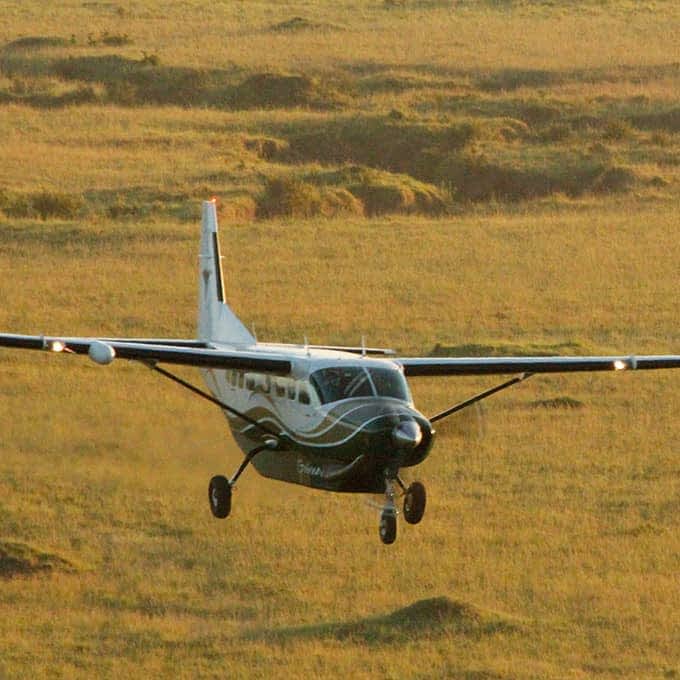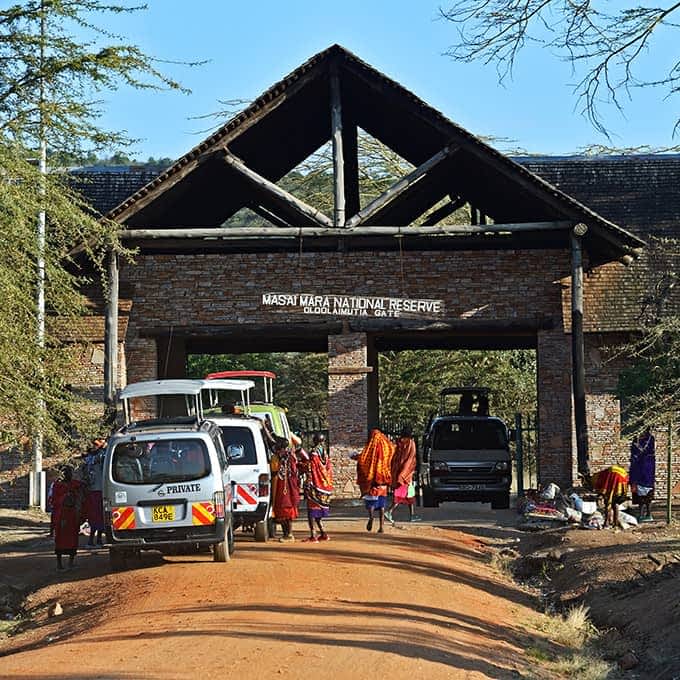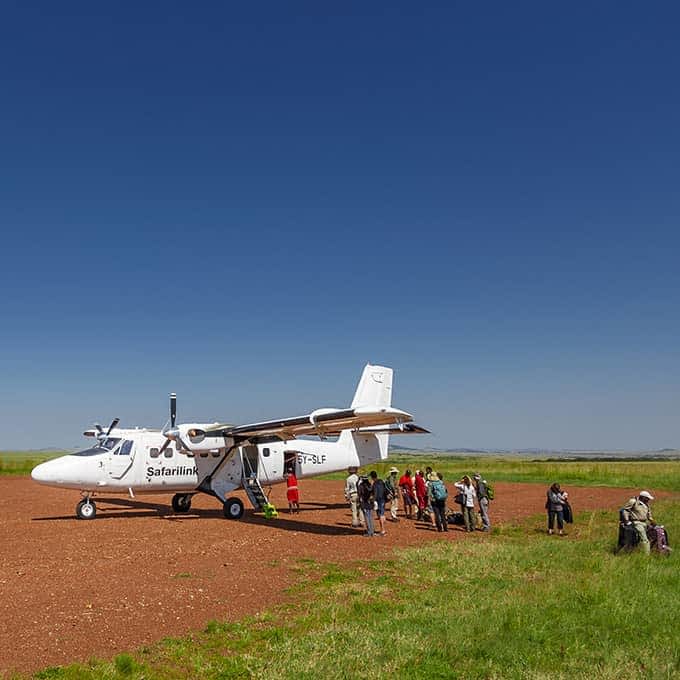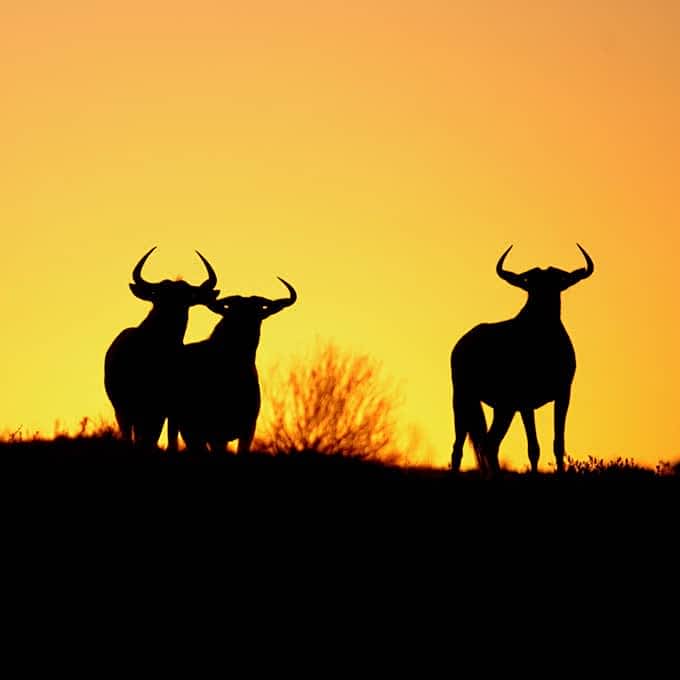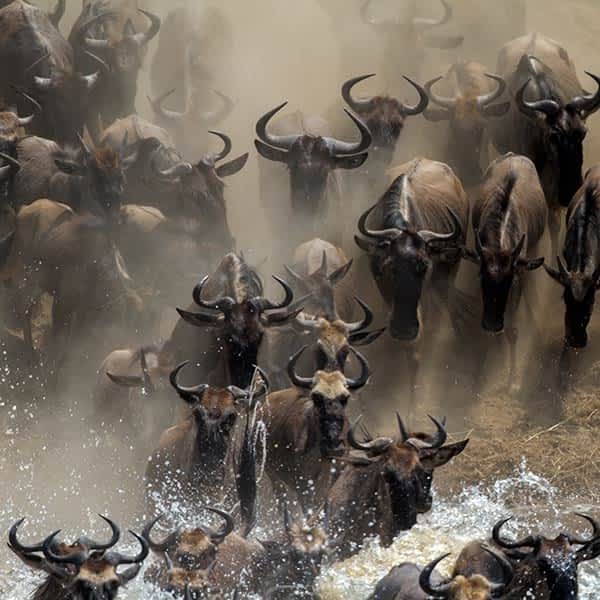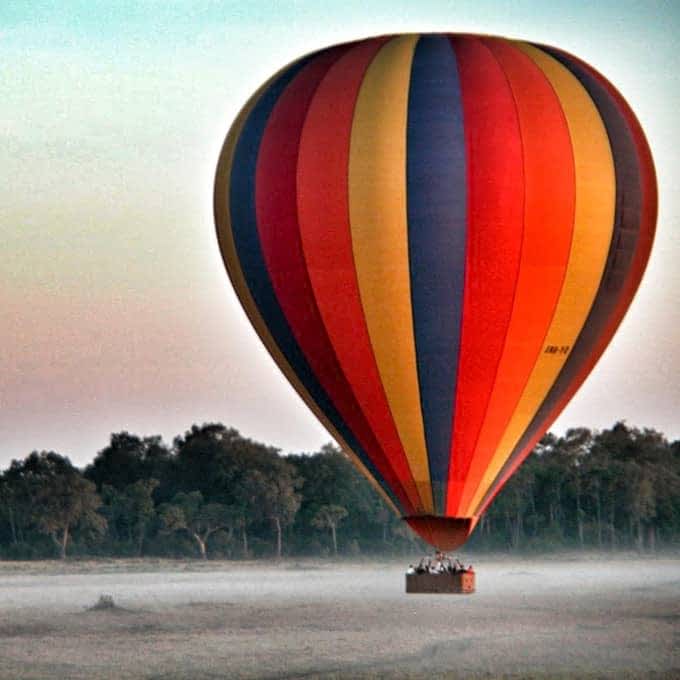Getting to Masai Mara by air
International air travel
The recommended port of entry, when travelling to the Masai Mara, is Jomo Kenyatta International (NBO) in Nairobi. NBO Airport serves as East Africa's biggest hub and as a result many convenient flight options are available. KLM Royal Dutch Airlines, Air France, British Airways, Emirates, Etihad Airways, Kenya Airways, Lufthansa, Qatar Airways and Swiss all operate flights from a multitude of major airports around the world. Also many regional flights options (including flights to neighbouring countries and Southern African destinations) are available.
Domestic air travel
The favoured route for a Masai Mara fly-in safari is by flying from Nairobi Wilson Airport (WIL). From here it is a short (between 45 and 60 minutes) flight to the Mara. For this reason, flying into the Masai Mara is our recommended mode of travel. Although road conditions have improved in recent years, there are still considerable stretches of road that are in very poor condition. There are several airstrips in and around the Masai Mara for you to fly into. Which one you fly into will depend on where you decide to stay during your safari. Flights to the Mara are operated by airlines such as SafariLink and AirKenya. Upon your arrival at the airstrip closest to your accommodation, a safari vehicle will be waiting to take you to your Masai Mara safari lodge. The good news is... you are now in the Masai Mara – so you can start spotting wild animals by air during your flight and on the ground while in the safari vehicle taking you to your camp. Read all about flights to Masai Mara.
It is also possible to fly from Kilimanjaro International Airport (JRO) in Tanzania. There are also direct flights (mostly in high season) from the Kenyan coast (Mombasa and Diani) and other national parks in Kenya such Amboseli National Park and Samburu National Reserve.
Most important Masai Mara airstips
Here is a quick list of the major airstrips located in the Masai Mara:
- Keekorok
- Serena
- Musiara
- Mara North
- Ol Kiombo
Getting to the Masai Mara by road
Masai Mara drive-in safaris
The most common way to travel to the Masai Mara by road is by booking a guided drive-in safari. Drive-in safaris start from Nairobi and allow you to include multiple other destinations in Kenya besided the Masai Mara. Extended classic Kenya safari itineraries usually include overnight stays in Amboseli National Park and Lake Nakuru National Park. Please contact us if you are interested in an extended safari itinerary, we are happy to assist!
Masai Mara self-drive safaris
Although not recommended, the Masai Mara is accessible when travelling by (rental) vehicle. Please keep in mind that careful planning is necessary when driving yourself. A 4x4 vehicle is required to access all roads throughout the year. Kindly note that we do not assist self driving visitors.
Masai Mara National Reserve gates
Once you reach the Masai Mara National Reserve there are several entry gates. It is important to take the correct gate into the National Reserve to save time getting to your accommodation. There are five main gates leading into the Masai Mara National Reserve: Sand River, Talek, Sekenani, Musiara and Oloololo. These final two gates are a bit further away and will take an additional 30 minutes to reach in comparison to the other gates. All gates open at 6.00 AM in the morning and all gates close at 6.00 PM in the evening.
Entry fees Masai Mara National Reserve
The entry fee per person is US$ 100 per adult per day for visits between 1 January and 30 June. Children aged 9 to 17 years pay US$ 50 per day, while children up to 8 years old are exempt from park fees. From 1 July to 31 December, the adult entry fee increases to US$ 200 per day, with the child rate remaining at US$ 50 per day. Additionally, under the 12-hour rule, guests departing the reserve after 10:00 am or taking part in a morning activity on their departure day will be charged an extra day's entry fee.
Please note that -when confirming your Masai Mara safari through us- all park fees are included in your itinerary.
Entry fees Masai Mara conservancies
Entry and conservation fees for staying at one of the Masai Mara conservancies differ from the rates indicated above. Roughly, these fees range between US$ 90 and US$ 200 per person per day. Olare Motorogi Conservancy, for instance, currently charges US$ 100 per person per day. Also when booking at stay at one of the conservancies we will always include these fees.
Kindly note that all above rates and conditions are subject change without notice.
Immigration and visa information: Kenya
Most international travellers require a visa when arriving in Kenya. We recommend applying for your visa prior to arriving in Kenya in order to limit time spent waiting in a queue after your arrival. A single-entry e-visa is valid for up to 90 days. The price of the e-visa is US$ 51 per person. For more information regarding visa requirements we recommend reviewing information by the Kenyan embassy in your country of residence. Applications for an e-visa should be done through The Directorate of Immigration Services website.
Travelling from the Masai Mara to Serengeti National Park (or vice versa)
Travelling from the Masai Mara to Serengeti National Park is more complicated than one would hope, as the Bologonya (or Bologonja) border crossing between Kenya and Tanzania linking both reserves is closed indefinitely. As a result, we do not recommend travelling via land (road transfer or self-driving) from the Mara to the Serengeti or vice versa (via Isebania or Namanga border posts).
Although flying between the Mara and Serengeti is not ideal, it is still the most time-efficient and convenient mode of travel. The issue is that one needs to cross the border between the two countries, but none of the airstrips in the Mara (and Serengeti) offer border facilities. Nonetheless, two flight routes are available when travelling from the Mara to the Serengeti.
The first route is offered by Safarilink (Kenya) and Coastal Aviation (Tanzania) and allows travellers to fly from the Masai Mara to the Serengeti camps in Tanzania. This route is accessible through the Migori airstrip (on the Kenyan side) and Tarime airstrip (on the Tanzanian side), both near the Isabania border post. The connection involves a road transfer between the two airstrips, providing a relatively convenient option for guests wanting to experience both the Masai Mara and Serengeti.
Please note that this service may only operate during high season and requires a minimum of two passengers per flight. The schedule starts with Safarilink picking up guests from various airstrips in the Masai Mara and arriving at Migori at 12h00. After a road transfer via Isabania border post for immigration clearance, passengers connect onto the Coastal Aviation flight to the Serengeti departing at 14h00 from Tarime.
The second option, which we recommend, involves travelling back to Nairobi Wilson (WIL) and connecting to a flight to Kilimanjaro International Airport (JRO). This option incurs the least hassle, as flight operations are reliable, and there is no overland transfer required between airstrips, unlike the Migori / Tarime option. Additionally, this option allows you to stay overnight in Nairobi to catch your breath after your safari experience in the Mara before continuing your safari in Tanzania.
Further reading

